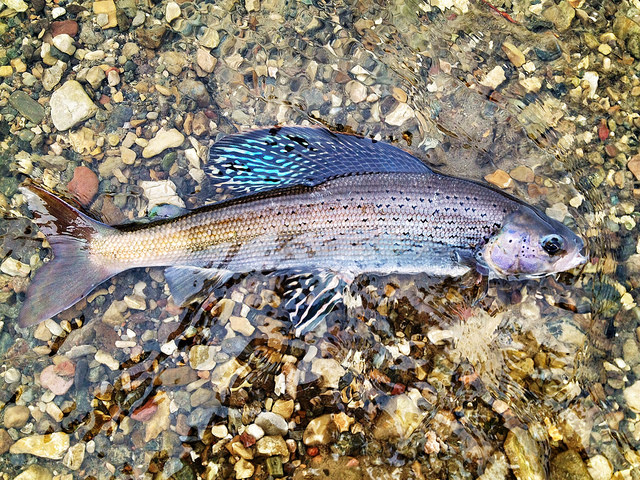
When the Endangered Species Act passed in 1973, the concern was that iconic species such as the bald eagle would become extinct. The main threats were from shooting, poisoning and trapping.
To address these concerns, Section 9 of the ESA, known as the “take clause,” included language that made it unlawful for any person “to harass, harm, pursue, hunt, shoot, wound, kill, trap, capture, or collect, or to attempt to engage in any such conduct.” This provision seemed sensible, but it has led to unexpected and adverse consequences for the species it was designed to protect.
The government has extended the “take clause” to include the “taking” of habitat that harbors—or could harbor—endangered species. The result is what many private landowners call the “3 S’s”—shoot, shovel and shut up—lest your land could be regulated by the federal government.
Most environmentalists scoff at the idea of the “3 S’s,” but there is plenty of evidence of the ESA’s perverse effects. In the 1980s, for example, North Carolina landowner Ben Cone was arrested and threatened with fines and jail time for cutting down old-growth pine trees on his property because the trees could potentially provide habitat for endangered red-cockaded woodpeckers.
He eventually settled out of court, but his famous case worried other landowners with forested property in North Carolina. They didn’t shoot woodpeckers, but many pre-emptively cut down their trees. The result was that old-growth timber, which might have become habitat, was turned into pulpwood.
Another example of pre-emptive action resulted from a lawsuit against the Fish and Wildlife Service, filed in 2009 by Friends of Animals and WildEarth Guardians, that would require game ranchers in Texas to get a “take permit” from the federal government before they could hunt animals on their private property. The groups used a subsection of Section 9 that makes it illegal to import or export any endangered species to or from the United States.
Although the addax, Dama gazelle and scimitar-horned oryx—three antelope species known as the “three amigos”—are endangered in their native Africa, they have thrived on Texas game ranches where hunters are willing to pay a handsome fee for a trophy. Anticipating that the environmental groups would get a ruling in their favor—which they did get in 2012—ranchers sold cheap hunts to capitalize on their investment before being tied up in bureaucratic red tape. As a result, the Exotic Wildlife Association estimated that the “three amigos” numbers in Texas are now at one-half to one-third of their 2010 levels.
Fortunately, the “three amigos” received a reprieve when President Obama signed an omnibus bill earlier this year exempting these three antelope species from Endangered Species Act restrictions. Preliminary indications are that ranchers are bringing them back.
The story of the arctic grayling, a freshwater fish species recorded by Lewis and Clark when they passed through Montana in 1805, is similar to the “three amigos.” For decades the Fish and Wildlife Service held hearings considering whether to list the fish as threatened or endangered. At one of those hearings, in May 1995, David Cameron, then a biology professor and manager of a family cattle ranch, explained that he had planned to restore grayling to a creek running through his ranch. He dropped the plan, however.
“People knowledgeable about the heavy-handed approach of the feds counseled me to forget the [grayling reintroduction] experiment. We might lose the right to graze our pastures,” he said. “It seemed a good deed would probably go punished, and life had sufficient complications without Federal agents giving orders.” The happy ending to this story came this August when the Fish and Wildlife Service decided not to list the grayling, noting that efforts by private landowners brought sufficient recovery.
Landowners can be exempted from strict interpretations of the “take clause” that caused Mr. Cameron angst thanks to so-called Habitat Conservation Plans and Safe Harbor Agreements. In 2004, for example, ranchers in Montana’s Big Hole Valley signed a voluntary “Candidate Conservation Agreement with Assurances” with the Fish and Wildlife Service to protect the habitat of the arctic grayling.
With financial help from the state and federal governments, the ranchers completed 250 habitat improvement projects including installation of fish ladders, fencing to keep livestock out of riparian areas, and improvements in irrigation efficiency to increase stream flows. Still, conservation groups, such as the Center for Biodiversity, threaten more lawsuits claiming the “Voluntary conservation efforts have failed to address the primary threats to the grayling.”
Aggressive use of the Endangered Species Act by environmental groups has not been beneficial to endangered species or to private landowners. Rather than punish private landowners who conserve wildlife, we should reward them for serving the public’s interest.
Brian Seasholes, director of Reason Foundation’s endangered species project, wrote a letter to the editor of the Wall Street Journal in support of this piece on October 27, 2014.



